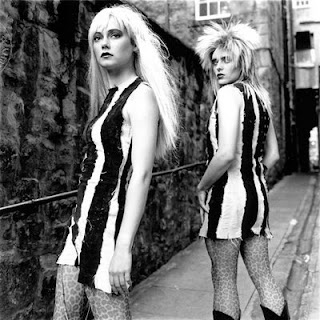 |
| Atget's way of documenting |
Two-Way Street by Lydia Yee uses strong key words like natural evidence and live witness to compare Atget and Cartier-Bresson’s photographs. But these can be pushed throughout the article with the archive, portrait and performance pieces (and their artists.)
 |
| Nikki S. Lee |
This article was jammed with artists that used the street as their primary canvas for their art and used photography as their recording technique and information medium in order to record their ideas. People of the street being followed and photographed and performances that use the street as an identifier. Nikki S. Lee embodied several different “classes” and explored those regions. From senior citizens, to punks, tourists and Latinos- she fit in with the groups well. Her success was illustrated by the photographs. These groups/projects all have a largely recognizable public establishment. Her photos with the punks weren’t as if we didn’t know what that group was- we knew who she was trying to be because of the public-ness of the cultures.
“The simultaneous recognition, in a fraction of a second, of the significance of an event as well as of a precise organization of forms which give that event its proper expression.”
(Cartier-Bresson)
New York Groove - Daniel Guzman. Pretty awesome song to put this street performance to.
 |
| Amy Arbus |
"The streets of the city are constantly changing, providing artists with a continuous source of images and ideas. In the century that separates Atget’s rue Vielle-du-Temple in Paris and Leong’s New Street in Beijing, daily life on the streets has become extremely complex — serving not only as thoroughfare for pedestrians and vehicles, commercial zone, and public space but also as cultural, political, social, domestic, and private space. While the street and its uses are transformed, contemporary artists continue to reinvent the possibilities of the street, crossing the median between traditional artistic genres and contemporary practices."
 |
| Shabazz |
In Karen Jones’s article, she starts by defining potlatch as the exchange of gifts eventually leading to the value of materialism not being able to be topped and then the destruction of their own property in order to make the value of the other’s go up. (From what I understood the “chief” of some culture did and its events that occurred in result of.)
She then goes to say that riots and potlatch have similarities as the shared community interest. I didn’t quite understand what she meant comparing the two, but I think she was trying to say that the community as a whole gets to a boiling point and will together act in unison. Hoping to achieve a common goal. Unless it was like a negative potlatch. The government gave them small shitty things and they rioted in order to have a bigger mess? Degenerative?
Winning.
 |
| Keith Haring |
 She describes the cycle of the artist’s struggle within their community. They’ll have a message, it becomes harder to convey the message, they try again in new and different ways, they still get knocked back- but they keep trying to figure out to gain their status and that their voice counts.
She describes the cycle of the artist’s struggle within their community. They’ll have a message, it becomes harder to convey the message, they try again in new and different ways, they still get knocked back- but they keep trying to figure out to gain their status and that their voice counts. CIRCA clown army - I found this on CPA and found it fascinating. They use this mob of clowns as a protest and manage to get some sort of a point across. (i'm at a loss for what the point is now- but it was started as a protest of a visitation of George W. Bush to the UK)
No comments:
Post a Comment